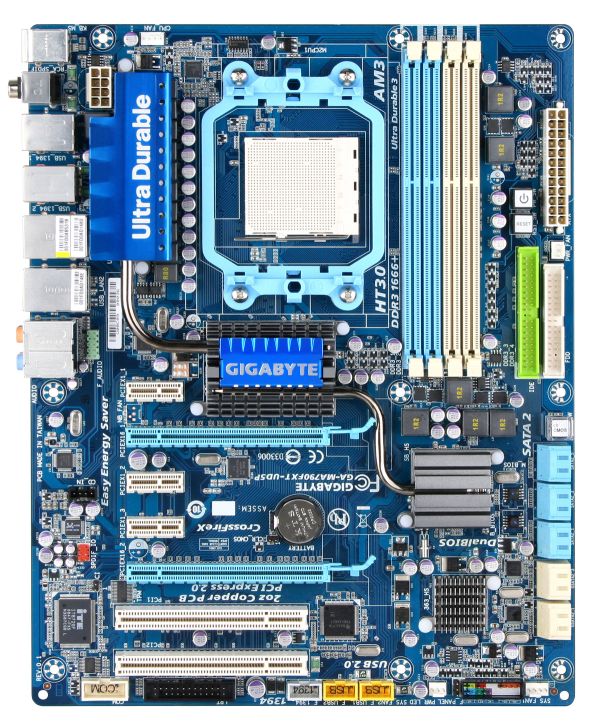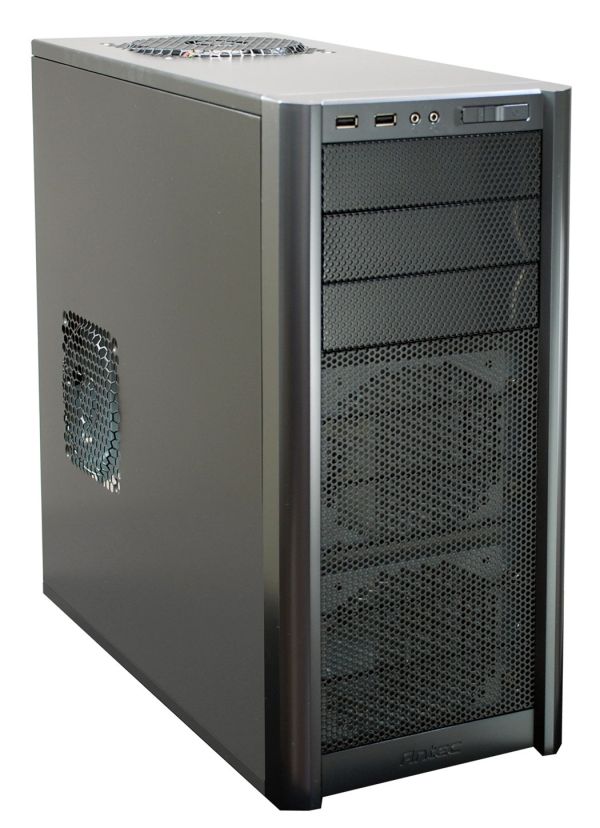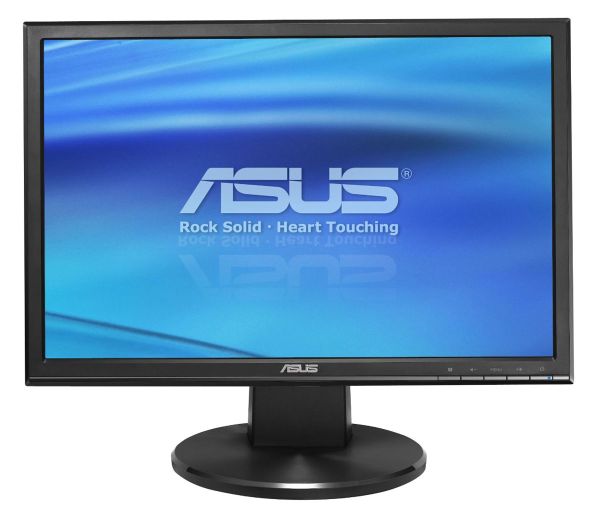Budget System Builder’s Guide February 2011
by Zach Throckmorton on February 14, 2011 12:00 AM ESTBasic System Builds
There's plenty of overlap between our AMD and Intel recommendations these days; the only major differences are in the choice of CPU and motherboard. As such, we're going to start there and then discuss all the common components below.
Base AMD System
| AMD Budget System | |||
| Component Type | Make & Model | Price | Rebate |
| CPU | AMD Athlon II X2 250 | $61 | |
| Motherboard | Gigabyte GA-880GM-D2H | $80 | ($10) |
| RAM | Patriot 4GB 2x2GB PSD34G1333K | $40 | ($5) |
| Hard Drive | Seagate 500GB ST3500418AS | $40 | |
| Optical Drive | LG GH24NS50 | $17 | |
| Power Supply | Antec Earthwatts EA-380D | $40 | |
| Case | Antec Three Hundred | $43 | |
| Operating System | Windows 7 Home Premium 64-bit | $100 | |
| Total Base System Cost | $421 | ($15) | |
| Input | Microsoft Keyboard and Mouse | $15 | |
| Display | ASUS VW193DR Black 19" (1440x900) | $110 | |
| Complete System Cost | $546 | ($15) | |
 AMD’s Athlon II X2 line of processors offers exceptional value for budget builders. The 250 model operates at an even 3GHz, and priced at just $61 it's typically a dollar or two more than the 245 model. In terms of real-world performance, the two CPUs are essentially identical, but 3GHz is a tempting psychological mark to acquire. Micro-ATX motherboards featuring the 880G chipset can offer VGA, DVI, and HDMI outputs from the integrated Radeon 4250 onboard graphics. This onboard GPU is more than capable of running Windows 7’s Aero UI and can easily handle 1080p video. It’s also able to run older and lightweight games like World of Warcraft, albeit only at lowered settings. At $70 (with rebate), Gigabyte’s GA-880GM-D2H is an excellent choice for the motherboard. Biostar’s A880G+ is a slightly less expensive alternative. Both offer very similar features and choosing between them is largely a matter of personal preference. For a combined price of $131, the AMD CPU and motherboard offer a lot of bang for the buck.
AMD’s Athlon II X2 line of processors offers exceptional value for budget builders. The 250 model operates at an even 3GHz, and priced at just $61 it's typically a dollar or two more than the 245 model. In terms of real-world performance, the two CPUs are essentially identical, but 3GHz is a tempting psychological mark to acquire. Micro-ATX motherboards featuring the 880G chipset can offer VGA, DVI, and HDMI outputs from the integrated Radeon 4250 onboard graphics. This onboard GPU is more than capable of running Windows 7’s Aero UI and can easily handle 1080p video. It’s also able to run older and lightweight games like World of Warcraft, albeit only at lowered settings. At $70 (with rebate), Gigabyte’s GA-880GM-D2H is an excellent choice for the motherboard. Biostar’s A880G+ is a slightly less expensive alternative. Both offer very similar features and choosing between them is largely a matter of personal preference. For a combined price of $131, the AMD CPU and motherboard offer a lot of bang for the buck.
Base Intel System
| Intel Budget System | |||
| Component Type | Make & Model | Price | Rebate |
| CPU | Intel Pentium G6950 | $95 | |
| Motherboard | MSI H55M-E21 | $70 | ($10) |
| RAM | Patriot 4GB 2x2GB PSD34G1333K | $40 | ($5) |
| Hard Drive | Seagate 500GB ST3500418AS | $40 | |
| Optical Drive | LG GH24NS50 | $17 | |
| Power Supply | Antec Earthwatts EA-380D | $40 | |
| Case | Antec Three Hundred | $43 | |
| Operating System | Windows 7 Home Premium 64-bit | $100 | |
| Total Base System Cost | $445 | ($15) | |
| Input | Microsoft Keyboard and Mouse | $15 | |
| Display | ASUS VW193DR Black 19" (1440x900) | $110 | |
| Complete System Cost | $570 | ($15) | |
 The least expensive CPU available for Intel’s LGA 1156 socket is the Pentium G6950 at $95. The MSI H55M-E21 and Biostar TH55B HD motherboards offer nearly identical features, and both are solid choices for a basic Intel build. Intel’s integrated graphics on the G6950 are far superior to Intel’s older motherboard-based integrated graphics, and are competitive with the Radeon 4250 (but note that the G6950 IGP is clocked at a slower 533MHz compared to some of the faster Arrandale chips, so the HD 4250 holds a clear lead unless you go with something like the i5-661).
The least expensive CPU available for Intel’s LGA 1156 socket is the Pentium G6950 at $95. The MSI H55M-E21 and Biostar TH55B HD motherboards offer nearly identical features, and both are solid choices for a basic Intel build. Intel’s integrated graphics on the G6950 are far superior to Intel’s older motherboard-based integrated graphics, and are competitive with the Radeon 4250 (but note that the G6950 IGP is clocked at a slower 533MHz compared to some of the faster Arrandale chips, so the HD 4250 holds a clear lead unless you go with something like the i5-661).
Here's where we pay the Intel tax: the combined motherboard and CPU cost for our budget Intel platform checks in at $155, $25 more than the AMD system. [Ed: Prices can fluctuate wildly, and earlier in the week the difference in pricing was $50; the review was written from the perspective of a $50 difference, and while we updated the tables we have left most of the text in place. Just be aware that a swing of $25 or more over the course of a week is not unusual.] You could put that money towards a faster CPU, a discrete GPU, a larger/faster HDD/SSD, etc. The other side of the story is that the Intel platform will generally consume 10W less at idle, and the gap can be as large as 40-50W under load; if you leave your system on 24/7, you'll make up the difference in cost with power savings over the course of five years (give or take)—or as little as 1-2 years if you happen to run Folding@Home constantly. Considering what most of us pay for cell phones and broadband Internet, though, there are probably better ways to save money if you need it.
Common Components
As mentioned above, the remaining components are common to both builds. Starting with the memory, DDR3 is as cheap as it’s ever been, with $10/GB without rebate options common. With rebates, it’s possible to pay less than $10/GB – Patriot’s 2x2GB (4GB total) PSD34G1333K is currently $40 shipped with a $5 rebate, for example. With prices that low,  there's really no need to consider anything less than 2x2GB RAM; likewise, there's little point in upgrading a budget system to more than 4GB unless you happen to use some applications that will actually benefit.
there's really no need to consider anything less than 2x2GB RAM; likewise, there's little point in upgrading a budget system to more than 4GB unless you happen to use some applications that will actually benefit.
Hard drives with one platter at 500GB capacity can routinely be found for $40 shipped or less, and the performance differences between the major manufacturer’s mainstream (i.e. non-green, non-high performance) drives are typically only apparent in synthetic benchmarks. Currently, Seagate’s ST3500418AS is only $38 shipped. Optical drives also have very little product differentiation at the budget end, with $20 or less shipped for a DVD burner now commonplace. Patience can yield a dual layer and/or LightScribe DVD burner for less than $20, e.g. LG’s GH24NS50 is available for $17 shipped right now.
Cases are highly subjective, as different aesthetics appeal to different people. Antec’s Three Hundred is regularly available for $60 or less shipped, and right now it’s offered for $43. It features a tri-cool 120mm rear exhaust fan and a tri-cool 140mm top exhaust fan. It also has placements for two front 120mm intake fans. These fans, as well as a good cable management system, make it great for keeping a system running cool. Its downsides are that it has little to no noise dampening and it’s made of steel, so it’s heavy. For a budget build, there's no need for extra fans and the overall quality of the Three Hundred is very good.
 Many builders choose the power supply as an area to cut down on total system cost, but don’t buy a cheap PSU! Besides the lower quality and potential problems down the road, efficiency is also worse so you end up paying for cheap PSUs in the long run. Antec offers its 380W Earthwatts model for $50 or less shipped, but it’s often on sale for $40 shipped, and sometimes less with a rebate. It’s 80 Plus certified and as high quality as can be commonly be found for under $50. Corsair’s new Builder Series CX430 is usually a bit cheaper, but does not receive the excellent reviews its predecessors did and is generally regarded as slightly inferior to the Antec Earthwatts 380W, but is nevertheless a viable alternative.
Many builders choose the power supply as an area to cut down on total system cost, but don’t buy a cheap PSU! Besides the lower quality and potential problems down the road, efficiency is also worse so you end up paying for cheap PSUs in the long run. Antec offers its 380W Earthwatts model for $50 or less shipped, but it’s often on sale for $40 shipped, and sometimes less with a rebate. It’s 80 Plus certified and as high quality as can be commonly be found for under $50. Corsair’s new Builder Series CX430 is usually a bit cheaper, but does not receive the excellent reviews its predecessors did and is generally regarded as slightly inferior to the Antec Earthwatts 380W, but is nevertheless a viable alternative.
 Including the $100 cost of Windows 7 Home Premium 64-bit (OEM version), the basic AMD build checks out at $421 out of pocket with $15 in mail in rebates, and the basic Intel build costs $445 with $15 in mail in rebates. If you already have a keyboard, mouse, and LCD that's all you'll need; otherwise plan on spending around $20 for a keyboard and mouse (we generally prefer the basic Logitech and Microsoft designs, but get whatever you like), and entry-level 19" LCDs start at around $110 shipped (e.g. the ASUS VW193DR). That brings the cost for a complete budget system up to $531 for the AMD build or $555 for the Intel system (after rebates).
Including the $100 cost of Windows 7 Home Premium 64-bit (OEM version), the basic AMD build checks out at $421 out of pocket with $15 in mail in rebates, and the basic Intel build costs $445 with $15 in mail in rebates. If you already have a keyboard, mouse, and LCD that's all you'll need; otherwise plan on spending around $20 for a keyboard and mouse (we generally prefer the basic Logitech and Microsoft designs, but get whatever you like), and entry-level 19" LCDs start at around $110 shipped (e.g. the ASUS VW193DR). That brings the cost for a complete budget system up to $531 for the AMD build or $555 for the Intel system (after rebates).










58 Comments
View All Comments
Gigantopithecus - Monday, February 14, 2011 - link
Hi Vincent - Zach here, thanks for your feedback. I wanted to give readers an idea of how wide the SSD field has become by mentioning the main players. I think that's an important consideration given how much SSD prices fluctuate (one of Newegg's shell shocker deals today is a $120 (after rebate) 128gb SSD). While many of Intel's competitor's (like OCZ) often offer better price/capacity SSDs, I recommended Intel's G2 40gb in the upgraded build for reasons including the one you highlight. The guide even explicitly states the Intel SSDs are perceived as more reliable/issue-free. Of course, objective, thorough studies on the reliability of any PC component are essentially non-existent, unfortunately.benrico - Monday, February 14, 2011 - link
I thought these were coming out much sooner.... what gives?Gigantopithecus - Monday, February 14, 2011 - link
By "The next year will bring us Intel’s third generation SSDs, and second generation parts from SandForce, Crucial, and Indilinx," I meant that these drives will all be coming out over the course of the next year. (Not that they will arrive next year, in 2012.)kevith - Monday, February 14, 2011 - link
Zach, nice roundup, nice, straightforward language, good job. It's nice to have someone else to sum up all the articles, so that I don't need to open them in four tabs in three browser-windows when planning a build.Only thing, maybe it's me, but you write, that: "... smaller SSD's doesn't have high write-speeds, but write-speed are not nearly as important [as read-speeds] for an OS/app-drive...", something like that.
I thought that was just opposite: That you should go for a drive with fast write-speed for the OS-drive...? I understood, that when the OS is writing to the disk in the background, the system can freeze until the writing is done? Or was that only on early SSD's, and doesn't count anymore? Would love it if I'm wrong...:-)
I'm sure you'll be asked to write more.
Gigantopithecus - Monday, February 14, 2011 - link
Hi kevith - Thank you for your feedback. I could have been more clear in the article. The only metric where SSDs don't handily best mechanical HDDs is sequential writes. In fact, fast HDDs like WD's VelociRaptors have higher sequential write performance than many SSDs. However, once the initial OS and app installation is done, your OS will rarely hit the SSD with sustained writes. Random reads and writes (which are MUCH faster on SSDs than HDDS) are far, far more common for a boot drive than sequential writes. Anand's article from almost two years ago sums this up well, see http://www.anandtech.com/show/2738/24 and http://www.anandtech.com/show/2738/25 - while the SSDs in that article are mostly outdated at this point, the take-home message stands.kevith - Monday, February 14, 2011 - link
Great, thanks for the clarification and hint to the article, good for background knowledge.lestr - Monday, February 14, 2011 - link
Good work on the GUIDE. That's what it is, a GUIDE, right? FIRST word is BUDGET.
I find it interesting and somewhat disconcerting that so much time was spent by so many arguing over and trying to second guess you and Jerrod on the use of the Antec 380 with respect to an SLI or CF configuration. I am curious as to how those people intend to install 2x PCIex16 cards on uATX boards with only one slot. That one has me really bumfuzzled and bewildered... is there an adapter for it? I'll buy 3! And they can't MENTALLY add or subtract $100 for an OS... Kinda like reading a review on the Egg where the author complains that an OEM processor doesn't come with a fan... Their only point appears to be trying to impress you and other readers of their intelligence? Big dog on the porch syndrome.. Oh well.
My only question involves the SSD. I don't claim to be an expert, but it seems that a Crucial SSD C300 64GB would be a better choice all around as it's ~$130 and is also SATA 3 which would future proof at least the AMD and the Intel if it is backward compatible to 3gb/s and would be useful on the new 1155 fiasco.
I only wish people would realize this is only a guide and to accept the parts they like and change the parts they don't by doing more research instead of commenting on irrelevant issues. The one HUGE FACT is that next gen - what ever part - is going to require LESS power than what we have today. I can see needing 500W or more on a full ATX with multiple x16's but then, would such a build be listed under BUDGET? Some people always have to pick things apart and complain, don't they?
Thanks for your time, energy and effort on our behalf.
.
rwei - Tuesday, February 15, 2011 - link
Great article - having just upgraded an old P4 2.4C Northwood (may it rest in peace) for my parents, I'm glad to see many of my choices were in line with your well-made part suggestions.I'm just a little curious as to why you didn't mention core unlocking, which is potentially a significant boon for a budget builder.
The system I got my parents uses a $50 MSI motherboard (the 880GM) with a Phenom II X2 555 ($85 - both USD prices converted from what I saw in Hong Kong). With little effort, I have the new system running with 3 cores (the 4th is unstable) at 3.8 GHz with just a slight increase in voltage. At that level, it can start to play with the big boys like the 955BE, but the cpu/mobo combo cost me less than the 955 CPU alone.
stmok - Tuesday, February 15, 2011 - link
"I'm just a little curious as to why you didn't mention core unlocking, which is potentially a significant boon for a budget builder."=> Because core unlocking isn't 100% guaranteed. Its luck of the draw...The goal is a guide for budget buyers. Most computer users on the planet aren't overclockers, tweakers, or enthusiasts. Guides like this will help them the most.
I have to agree though, Zach Throckmorton did do a good guide here. Its sensible and realistic for the current situation.
HangFire - Tuesday, February 15, 2011 - link
Most computer users are not system builders, either. At least mentioning core unlocking, if not recommending it, would be worthwhile.